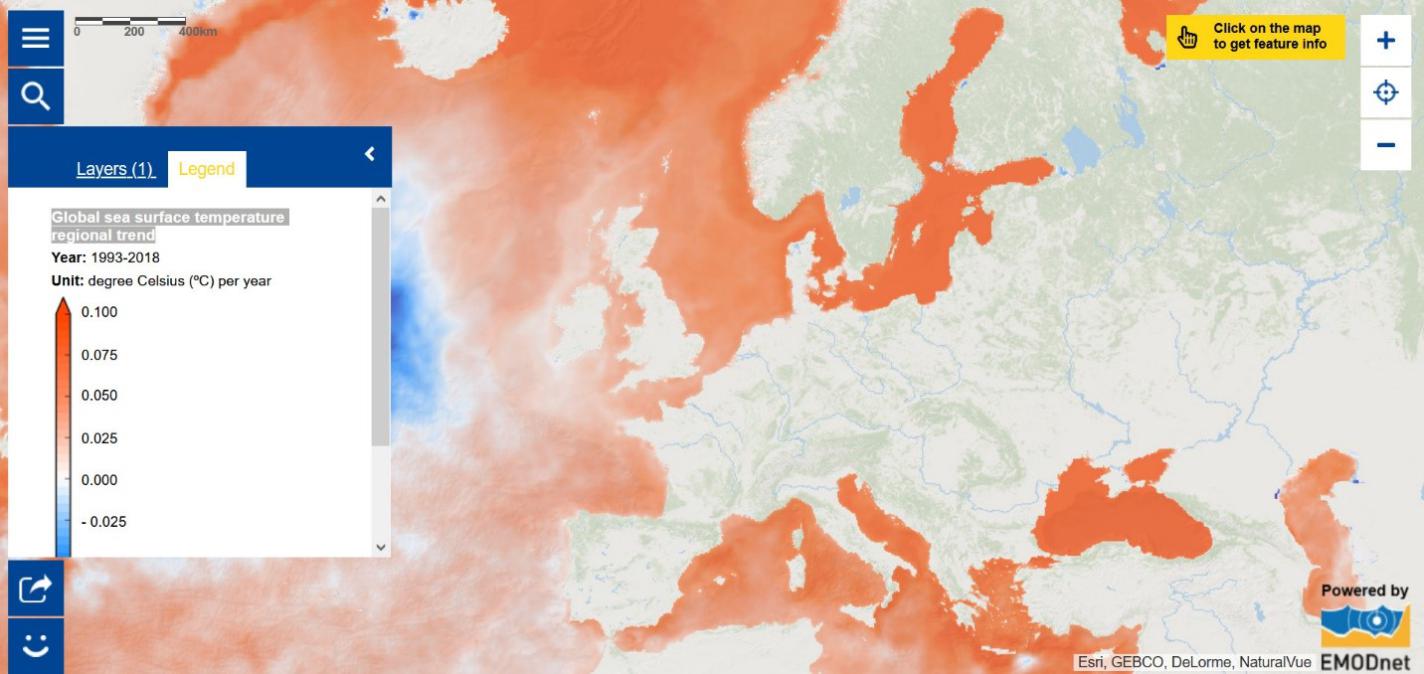Map of the Week – Global sea surface temperature regional trend

One of the key impacts of climate change on the ocean and seas is increased sea surface temperature. The Copernicus Marine Service [1] time series shows that the average global sea surface temperature has risen by more than 0.3°C since the early 1990s and continues to rise at an unprecedented rate of 0.014 ± 0.001°C per year. In the past four years, we observed the warmest ocean surface temperatures since records began. Sea surface temperature (SST) does not rise homogeneously and thus some regions are more threatened than others.
The impacts of increased sea surface temperature are numerous, notably:
- Sea level is rising as a result of ocean heating and land ice mass loss. About 30% of contemporary global mean sea level rise can be attributed to thermal expansion. Since about 2000, melting of glaciers and disintegration of the Antarctic and Greenland ice sheets have exceeded the effects of thermal expansion. [2] Average global sea level has risen by more than 8 cm since the early 1990’s and it continues to rise at a rate of 3.3 mm each year. [3] To learn more about sea level rise, have a look at the new map on Global mean sea level regional trend in the European Atlas of the Seas.
- Increases in sea surface temperature lead to changes in species' distribution ranges, abundance and seasonality, and affect marine food webs. Marine heat waves can cause immediate shifts in the distribution of (mobile) species, drive regime shifts and cause local extinctions. [4]
- Increases in water temperature cause coral bleaching. [5]
- Since 1960, the oxygen content has declined by 2 % in the global ocean, due to both a decrease in deep ocean ventilation and a decline in oxygen solubility as a result of temperature increases and increased microbial respiration at higher temperatures. [4]
The reduction of greenhouse gases emissions is key to limiting the impacts of global warming on the ocean. The European Climate Law and the Climate Pact, two components of the European Green Deal, respectively set the target for climate change mitigation in Europe and invite everyone to participate in climate action. Climate change adaptation is as important to address the changes already observed. The European Adaptation Strategy aims at making Europe more climate-resilient. 2021 is an important year for the ocean and climate change. During the online Climate Adaptation Summit 2021 (CAS21) on 25-26 January 2021, participants from countries across the world joined forces to share knowledge, create action and drive the agenda toward a climate-resilient future in 2030. The 26th UN Climate Change Conference of the Parties (COP26) will take place in Glasgow in November 2021. Furthermore, the start of the United Nations Decade of Ocean Science for Sustainable Development was celebrated on 3 February 2021 with the broadcast of ‘A Brave New Ocean’, a global online event to raise awareness of the immense challenges and opportunities the ocean provides to achieve the global sustainable development goals (SDGs). An interesting year ahead! In the meantime, dive into the Atlas to learn more about global sea surface temperature regional trends.
The data in this map are provided by the Copernicus Marine Service.
